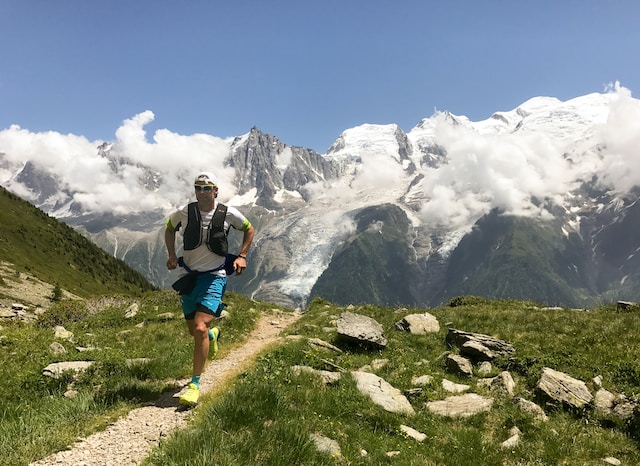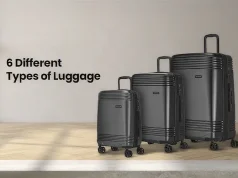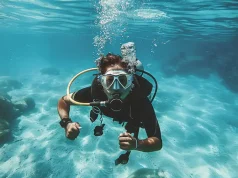
As the summer season unfurls its warm and inviting days, we’re all enticed to spend more time in the great outdoors. This beckoning call of nature comes with an opportunity to engage in our favorite outdoor activities or explore new ones, with running often being a top choice. Running, after all, requires no specialized equipment, and the world around us is a track waiting to be conquered.
Yet, as idyllic as summer running may sound, it presents its unique challenges — heat, dehydration, and sun exposure, to name a few.
In this article, we’ll dive deep into how to make the most of your summer outdoor activities, focusing particularly on running, and we’ll explore the essential gear like Goodr sunglasses and similar stuff that will help keep you safe, comfortable, and performing at your best.
Stay Hydrated: Hydration Packs for Runners
Hydration is your first and foremost consideration when engaging in any form of physical exertion in the summertime. The combination of sweating from exercise and the summer heat can rapidly deplete your body’s water levels, leading to dehydration. This condition not only hampers your performance but can also pose severe health risks.
One practical solution is to use a hydration pack during your runs. This clever accessory allows you to carry significant water without hampering your movement or causing discomfort. Let’s discuss how to choose one and the best way to use it:
- Capacity: Choose a hydration pack that carries enough water for your run’s length and intensity. Remember, the longer and more strenuous your activity, the more water you’ll need. As a rule of thumb, plan for about one liter of water per hour of intense activity.
- Fit and Comfort: Depending on the model, your hydration pack should feel comfortable and secure on your back or waist. Look for adjustable straps that will allow you to get a snug fit. It shouldn’t bounce around or chafe as you run.
- Ease of Drinking: Many hydration packs feature a drinking tube for easy access to water without needing to stop or even slow down. Before your run, make sure the tube is correctly adjusted for easy reach.
- Practice: If you’re not used to running with a hydration pack, it might initially feel a bit strange. Practice using it during your shorter runs or walks to get accustomed to the weight and feel. This practice will also help you adjust the pack for maximum comfort.
For additional hydration, consider optimizing your fluid intake not only during exercise but also in your daily routine. For example, at-home micronutrient testing can help you identify deficiencies in vital vitamins and minerals that impact your body’s hydration. Consult with a healthcare professional for personalized guidance to enhance your performance in summer conditions.
Choosing the Right Footwear: Trail Running Shoes for Summer
Your choice of footwear is pivotal when it comes to running, more so when you plan to venture off the beaten path for some trail running. Trail running shoes are made to provide traction, stability, and protection, and choosing the right pair for summer running entails a few additional considerations.
- Breathability and Quick Drying: Summer trail running shoes should have breathable uppers to help keep your feet cool. In case you encounter streams or puddles, look for materials that dry quickly.
- Traction: Summer trails can vary from dusty and loose to hard-packed and slick if it rains. Look for shoes with a high-traction outsole that can handle a variety of trail conditions.
- Protection: Trail shoes should protect against rocks, roots, and other trail hazards. Look for features like a reinforced toe cap and underfoot rock protection.
- Fit and Comfort: As with any running shoes, a good fit is crucial. Your foot should feel secure in the shoe without any tight spots or areas of pressure. Remember, your feet can swell in the heat, so ensure there’s extra room, especially in the toe box.
- Breaking In: Don’t take a new pair of shoes out for the long run. Wear them around the house, then on short runs to break them in. This step will help you avoid blisters and discomfort during your runs.
Running in the summer can be an exhilarating experience, offering unique challenges and rewards. By staying hydrated and choosing the right footwear, you’ll be well on your way to safe and enjoyable summer runs. And with the right gear, like running sunglasses, you’ll be fully equipped to take on the summer trails.
Shade for Your Eyes: Top Running Sunglasses
Sunglasses are more than a fashion statement when you’re out running on a sunny day; they’re a necessity. Prolonged exposure to the sun’s ultraviolet (UV) rays can harm your eyes, leading to conditions like cataracts in the long run. Running sunglasses also enhance your vision on bright days, reducing glare and increasing contrast, which is particularly helpful if you’re trail running.
Goodr is a well-known brand in the running community for its stylish and performance-oriented sunglasses. They are known for their no-slip, no-bounce performance, making them an excellent runner choice. Here are some tips on what to look for in running sunglasses and how to make the most of them:
UV Protection: Always choose sunglasses that provide 100% UV protection. The harmful effects of UV rays are cumulative and can lead to eye problems over time.
Fit: Look for sunglasses with a snug fit so that they stay put during your run. They should feel comfortable, not too tight, and not slide down your nose. Goodr sunglasses, for instance, are known for their comfortable and secure fit.
Lens: Depending on the time of day you run and the typical weather in your area, you might want to choose different lens colors. Gray lenses reduce light intensity without affecting color, while amber or brown lenses can enhance contrast, helping you spot trail hazards more easily.
Care: Keep your sunglasses clean and safe when not in use. Dirt and smudges can impair vision, and scratches can weaken the lenses.
Dress for Success: Summer Running Apparel
What you wear during your summer runs can significantly impact your comfort and performance. The right running apparel should help wick away sweat, keep you cool, and protect you from the sun’s rays.
Material: Look for lightweight, breathable fabrics that wick sweat away from your skin, helping it to evaporate quickly. Avoid cotton as it absorbs moisture, can become heavy when wet, and takes a long time to dry.
Fit: Your running clothes should be comfortable and not restrict your movement. Some people prefer loose clothing for better airflow, while others prefer tighter-fitting clothes that won’t flap around or chafe.
Color: Light colors are better for summer running as they reflect the sun’s rays instead of absorbing them, helping to keep you cooler.
Sun Protection: Consider wearing a hat or visor to protect your face from the sun, and always apply sunscreen to exposed skin.
Maximize Your Performance: High-Tech Gadgets for Outdoor Activities
You might want to consider some high-tech gadgets to enhance your summer running and outdoor activities experience. They can provide valuable information to track your performance, help you navigate, and entertain you.
GPS Watch: A GPS watch can help track your route, measure the distance you’ve run, your pace, and many other running metrics. They are handy for trail running where conventional mile markers or known routes might not be available.
Heart-Rate Monitor: Monitoring your heart rate can provide useful insights into your fitness level and how hard you’re working. Many GPS watches also include a heart-rate monitor.
Music Player and Earphones: Many runners find that music helps them get into a rhythm and makes their runs more enjoyable. Consider a small music player or using your phone, along with a pair of comfortable, sweat-resistant earphones.
Safety Lights/Reflective Gear: If you plan on running early or late in the evening, safety lights and reflective gear can help make you more visible to motorists and others.





